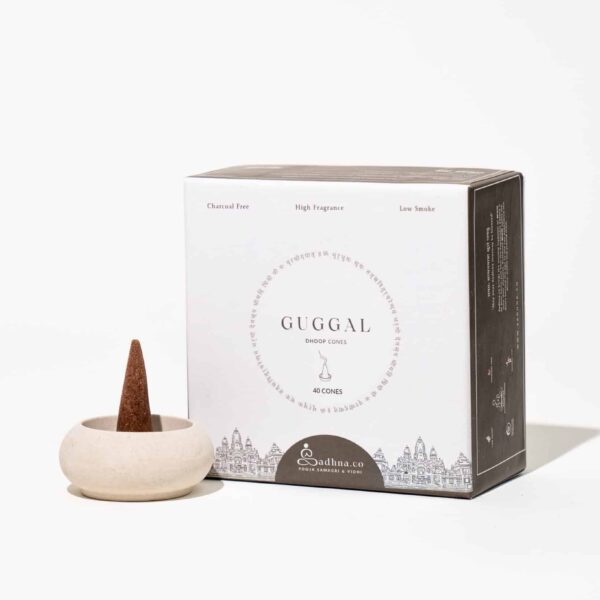In the vast pantheon of sacred scents and resins that have graced the spiritual and medicinal landscapes of Hinduism, Guggul holds a place of unique reverence. This fragrant resin, known for its potent healing properties and its role in balancing the inner energies, has been woven into the fabric of Hindu mythology, finding its significance highlighted in the epic tales of the Ramayana and Mahabharata. Beyond its historical and mythological mentions, Guggul’s connection to the Manipura chakra offers a profound insight into its power to stimulate personal strength and confidence.

Credits : www.speakingtree.in
Guggul in the Ramayana: A Lifesaver
In the epic narrative of the Ramayana, the healing prowess of Guggul is showcased during a critical moment when Lakshmana, brother of Lord Rama, lies unconscious, struck down by the formidable Meghnad. As the story unfolds in the Yuddha Kanda, the quest for the life-reviving Sanjeevani brings Hanuman to the Gandhamadana mountain, rich with medicinal plants. Guided by Jambavan, Hanuman is instructed to collect not just the Sanjeevani but also Guggul, underscoring its essential role in Lakshmana’s recovery. This episode illuminates Guggul’s revered status as a source of potent healing, capable of reviving the fallen and restoring balance.
The Mahabharata: A Story of Balance and Purity
The Mahabharata, another epic filled with tales of valor and wisdom, introduces Guggul in the context of Draupadi’s Swayamvara. Amidst this tale of challenges and triumphs, Karna’s failure to complete a task due to internal imbalances is notable. Krishna’s recommendation of Guggul to Karna for restoring his equilibrium highlights its significance beyond healing physical wounds to also balancing internal energies, aligning with the holistic view of health and well-being in Hindu philosophy.
Guggul and the Manipura Chakra: Empowerment from Within
The resonance of Guggul with the Manipura chakra, located in the solar plexus region, underscores its profound spiritual and psychological implications. Known as the center of personal power, confidence, and self-esteem, the Manipura chakra’s activation through the aroma of Guggul symbolizes the awakening of inner fire and motivation. Its stimulating and energizing properties not only aid in physical healing but also in igniting the fiery energy of the Manipura chakra, promoting vitality, clarity, and the courage to face life’s challenges.
Beyond Mythology: Guggul in Daily Practice
Guggul’s legacy extends beyond the epic tales and spiritual practices into the realm of Ayurveda, where its balancing properties are employed to harmonize the Kapha dosha. This application reflects the resin’s versatility in addressing both physical and energetic imbalances, offering a holistic approach to wellness that encompasses body, mind, and spirit.
In Conclusion: The Legacy of Guggul
Guggul, with its rich historical, mythological, and medicinal heritage, serves as a bridge connecting the ancient wisdom of Hindu scriptures with contemporary spiritual and health practices. Its mention in the epic tales of the Ramayana and Mahabharata not only highlights its importance in the cultural fabric of Hinduism but also offers insight into its enduring significance as a symbol of healing, balance, and empowerment.
As we embrace the essence of Guggul in our lives, let it remind us of the power of nature to heal, to balance, and to empower. May the scent of Guggul inspire us to tap into our inner strength, to ignite the fire of the Manipura chakra, and to walk the path of life with confidence and grace, embodying the virtues of vitality, dynamism, and resilience that this sacred resin represents.








